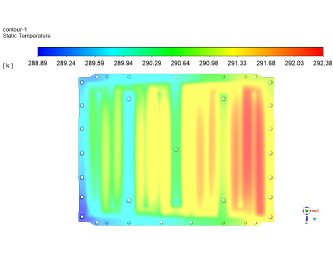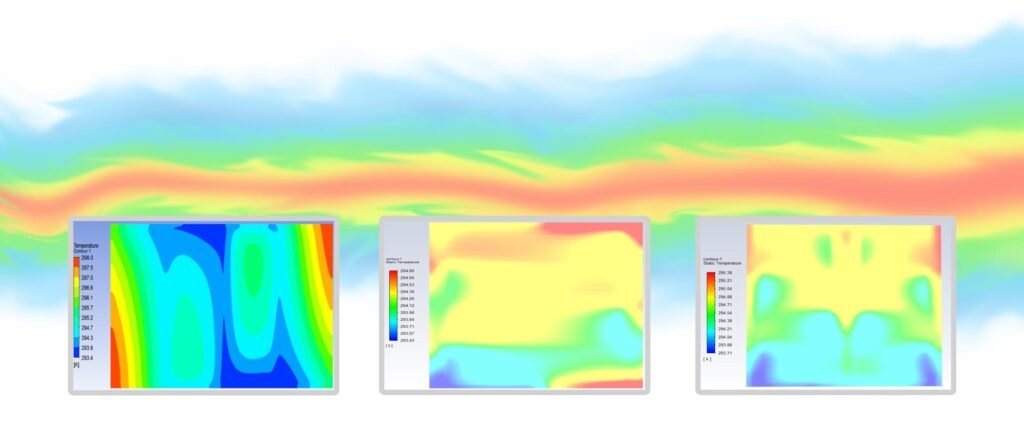Case Study
Weight Optimization and Structural Enhancement of High-Pressure Cold Plates using CFD and CAE ToolsIntroduction
The Alkraft design team was requested by a customer to work on a project to design and develop a high-pressure cold plate. The team came up with an initial design, but the customer requested a further weight reduction, which led to an iterative design and optimization process to reduce product weight while maintaining thermal performance, structural rigidity, and durability.
Project Overview


The primary objective of this project was to optimize the design of a high-pressure cold plate to reduce its weight by 20% without compromising its structural and thermal performance. The process involved improving and enhancing the geometrical parameters through CFD and CAE simulations.
Design and Optimization Process
Initial Design
Simulation Tools and Methodology
The optimization process was carried out using ANSYS Fluent for CFD simulations and structural analysis tools for CAE. The simulations helped in understanding the impact of geometrical changes on thermal and structural performance.
Thermal Design Optimization
Initial Design

Improved Design

The improved design maintained the same temperature variation in the base plate as the initial design by optimizing the geometrical parameters. This was achieved without compromising the structural rigidity and durability of the product.
Structural Design Optimization
The displacement and stress values in the improved design were found to be less than those in the initial design, indicating enhanced structural integrity.
Benchmarking Design Parameters
Comparative Results
Thermal Performance
- The maximum temperature at the base plate and the temperature variation remained consistent between the initial and improved designs.
- The coolant pressure drop increased slightly from 94 kPa to 104 kPa, which is within acceptable limits.
- The coolant flow rate saw a minor reduction from 14.8 LPM to 14.1 LPM.
- The maximum coolant temperature saw a negligible increase from 19°C to 19.1°C.
Structural Performance
- The displacement at static pressure of 10 bar reduced from 0.02 mm to 0.01 mm in the improved design.
- Stress contours indicated a decrease in stress values in the improved design compared to the initial design.
Conclusion
By leveraging CFD and CAE tools, Alkraft successfully optimized the high-pressure cold plate design to achieve a 20% weight reduction while maintaining the required thermal performance and enhancing structural rigidity and durability. The iterative design process ensured that all critical parameters were met, providing a robust and efficient solution for the customer.
Alkraft’s approach to optimizing the high-pressure cold plate exemplifies its commitment to innovation and excellence in thermal management solutions. This case study underscores the importance of advanced simulation tools in optimizing product designs, enabling significant improvements in performance and efficiency, and the critical roles these tools play in Alkraft’s design and product development processes.
View Other Case Studies



